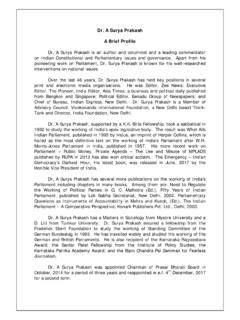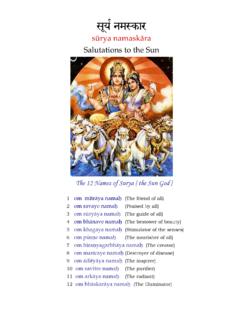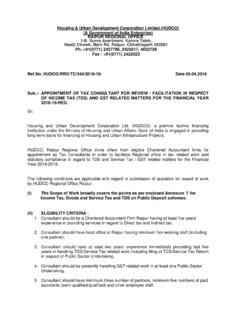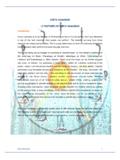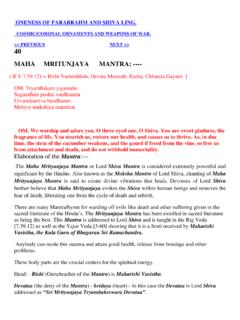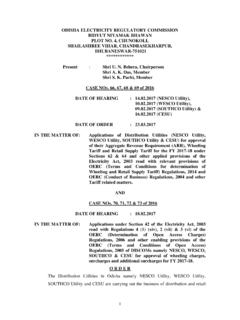Transcription of Yoga Postures Step By Step
1 yoga Postures step By step 1. Table of Contents Sl. No Sanskrit Name English Name Difficulty Page 1. surya Namaskar Sun Salutation 3 2. 2. Akarna Dhanur - asana Shooting Bow Posture 6 3. 3. Anjaneya asana Salutation Pose 7 4. 4. Ardha Chandra - asana Half Moon Posture 2 5. 5. Ardha Matsyendra - asana Half Spinal Twist Posture 4 6. 6. Baddha Kona Asana Restrained angle Posture 4 7. 7. Bala Asana Child Posture 1 8. 8. Chakra Asana Wheel Posture 8 9. 9. Dhanur - asana Bow Posture 5 10. 10. Ekapada - asana One Legged Posture 5 11. 11. Garuda asana Half Spinal Twist Posture 3 12. 12. Gomukha asana Cow Face Posture 4 13. 13. Hala - sana Plough Posture 5 14. 14. Hasta Pada angusta Hand foot big toe Pose 3 16. 15. Matsya - asana Fish Posture 3 17. 16. Naga asana Cobra Posture 4 18.
2 17. Nataraja asana King of the Dance Posture 3 19. 18. Padma asana Lotus Posture 6 20. 19. Parivritta parshvakona Turned Side angle Posture 7 21. 20. Pavana mukta asana Wind releasing posture 1 22. 21. Sarvanga asana Shoulder stand posture 5 23. 22. Shalabha asana Locust Posture 5 24. 23. Shava asana Corpse Posture 1 25. 24. Siddha - asana Accomplished Posture 2 26. 25. Simha asana Lion Posture 2 27. 26. Sirsha asana Headstand Posture 7 28. 27. Tada asana Mountain Pose 1 30. 28. Trikona asana Triangle Pose 2 31. 29. Ugra asana Powerful Posture 4 32. 30. Ushtra asana Camel Posture 5 33. 31. Vajra asana Diamond Posture 2 34. 32. Vira asana Hero Posture 2 34. 33. Vriksha asana Tree Pose 4 35. 34. Vrischika asana Scorpion Pose 9 36. 2. yoga Postures step -by- step 1.
3 The Sun salutation - Suryanamaskar Posture: surya -namaskar - Sun Salutation Translation: The Sanskrit word surya means sun. Namaskar is the Hindi word for Namaste, from the root nam, to bow. Namaskar means salutation, salute, greeting or praise. Pronunciation: soor-yee-ah-nahma-skar Difficulty: (3). step ONE: step TWO: Stand facing the direction of the Inhale and raise the arms upward. Slowly bend sun with both feet touching. backward, stretching arms above the head. Bring the hands together, palm- to-palm, at the heart. step THREE: step FOUR: Inhale and move the right leg back away from the Exhale slowly bending forward, body in a wide backward step . Keep the hands touching the earth with respect and feet firmly on the ground, with the left foot until the hands are in line with between the hands.
4 Raise the head. the feet, head touching knees. step FIVE: step SIX: While exhaling, bring the left foot together with the Exhale and lower the body to the floor until the right. Keep arms straight, the feet, knees, hands, chest, and forehead are raise the hips and align the touching the ground. head with the arms, forming an upward arch. step SEVEN: step EIGHT: Inhale and slowly raise While exhaling, bring the left foot together with the head and bend the right. Keep arms straight, raise the hips and backward as much as align the head with the arms, forming an upward possible, bending the arch. spine to the maximum (as in the naga-asana). 3. step NINE: step TEN: Inhale and move the right leg back away from the Exhale slowly bending forward, touching the earth with body in a wide backward respect until the hands are in line with the feet, head step .
5 Keep the hands and touching knees. feet firmly on the ground, with the left foot between the hands. Raise the head. step ELEVEN: step TWELVE: Inhale and raise the arms Stand facing the direction of the sun with both feet upward. Slowly bend touching. Bring the hands together, palm-to-palm, at the backward, stretching arms heart. above the head. 2. Akarna-Dhanura-asana The Shooting bow - Pose Posture: Akarna-dhanura-asana The Shooting-bow Pose Translation: The Sanskrit word karna means ear and the prefix "a" means near to or towards. Dhanur means bow-shaped, curved or bent. The "bow" here referred to is a bow as in "bow and arrow.". Literally we could translate this as the near-the-ear bow posture but because of the obvious appearance of the posture we'll call it the shooting bow posture.
6 Pronunciation: ah-car-nah da-noor ah-sa-na Difficulty: (6) Requires flexibility of hips and legs. 4. Instructions: 1. Sit on the floor with the legs together and extended straight out in front. Keep the back straight, shoulders level and head straight. Place the hands, palms down, flat on top of the thighs then inhale deeply. 2. Exhale and reach down and loop the forefinger of the right hand around the big toe of the right foot and grasp the left foot with the left hand. 3. Inhale and pull the right foot back placing the big toe next to the right ear. Straighten the back as much s possible and hold the posture for the duration of the inhale breath. 4. Exhale and return to the seated position of step #1 then repeat the posture on the opposite side.
7 "Having caught the toes of the feet with both hands and carried them to the ears by drawing the body like a bow, it becomes Dhanura-asana.". The Hatha- yoga -Pradipika Comments: While practicing this posture imagine yourself as an archer with the gaze focused on the target and the arrow firmly yet gracefully being pulled back in the bow. Hold the posture steady as an archer would hold the arrow aimed at its target. Return the foot to the floor gently. This simple technique will help cultivate a focused and unwavering attention. Variations: Reverse the hands and feet so that that the right hand pulls the left foot to the left ear and vice versa. The foot gets pulled under the outstretched arm. 3. Anjanaya-asana The Salutation Pose Posture: Anjanaya-asana - The Salutation Pose Translation: The Sanskrit word anjaneya means salutation or praise from the root anj which means to honor, to celebrate, to anoint.
8 Pronunciation: Ahn-jah-nay-ah-sa-na Difficulty: (7). Instructions: 1. Sit comfortably in the vajra-asana (thunderbolt pose). 2. Kneel up on your knees until your back, buttocks and thighs are aligned. 3. Extend your left foot foward bending your left knee at about a 90 degree angle. 4. Place the palms of your hands together at the heart in the anjali-mudra. 5. Raise your arms stright up keeping the palms together while bending the head backward and looking up. 6. Slowly bend backward stretching the arms backward and straightening out the right leg. Hold this position for as long as comfortable while breathing gently through the nostrils. 5. 7. Come back to the vajara-asana (thunderbolt pose) then reverse the posture by alternating legs. Comments: The anjaneya-asana combines several Postures and mudras (gestures) in a fluid, evolving flow that combines motion, stretching and holds.
9 It delivers great benefits for the back, arms, chest, legs and hips. Regular practice will strengthen concentration and improve balance. Perform this posture with a sense of reverence and praise. Take a moment to reside in silence and peace as your hands are held at the heart in the gesture (mudra) of salutation (anjali-mudra). Keep the intention of praise in mind as you extend your arms skyward. Feel your entire body-mind-heart extending outward in recognition of the sacredness of life. Duration/Repetitions: Repeat twice on each side. 4. Ardhachandra-asana The Half moon Pose Posture: Ardhachandra-asana - The Half-moon Pose Translation: The Sanskrit word ardha means "half," and the word chandra means "moon," thus, this is the "half moon" posture.
10 Pronunciation: ard-ha-chun-drah-sa-na Difficulty: (2). Instructions: 1. Stand in the tada-asana (Stand with both feet touching from the heel to the big toe, keeping the back straight and the arms pressed slightly against the sides with palms facing inward. 2. Bring the hands together at the chest with palms lightly pressed against each other (the Anjali-mudra). 3. Inhale and raise the arms straight up keeping the palms pressed lightly together. 4. Arch your body backwards keeping your arms alongside your neck and head, tilt the head backward and hold. Keep your knees straight while holding posture. 5. Slowly return to the tada-asana. 6. Comments: The ardha-chandra-asana is a basic stretching and balancing pose that benefits principly the lower back, abdomen and chest.)

